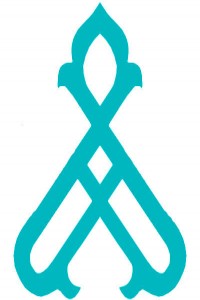The Correlation Between Burden of Disease and 8 Human Resource Indicators, 4 Technical Resource Indicators and 2 Infrastructure Indicators in 50 European and Central Asian Countries
Abstract
The paper checks if there is a linear correlation between burden of disease and 14 indicators below.
The paper studies if there is a linear correlation between burden of disease and the following human resource indicators: practicing physicians / 100000 population, general practitioners / 100000 population, pediatricians / 100000 population, practicing nurses / 100000 population, practicing caring persons / 100000 population, practicing pharmacists / 1000000 population, physicians employed by hospital / 100000 population, nurses and midwives employed by hospital / 100000 population. The linear correlation between burden of disease and the following technical resource indicators was studied: total hospital beds / 100000 population, CT / 100000 population, MRI / 100000 population, radiation therapy equipment / 100000 population. The linear correlation between burden of disease and the following infrastructure indicators was assessed: % of population connected to water supply system, % of population connected to sewage system, septic tank, or other hygienic means of sewage disposal. WHO data from 2004 was used for the following European and Central Asian countries: Albania, Andorra, Armenia, Azerbaijan, Belarus, Belgium, Bosnia & Herzegovina, Bulgaria, Croatia, Cyprus, Czech Republic, Denmark, Estonia, Finland, France, Georgia, Germany, Greece, Hungary, Iceland, Ireland, Israel, Italy, Kazakhstan, Kyrgyzstan, Latvia, Lithuania, Luxembourg, FYR Macedonia, Malta, Moldova, Netherlands, Norway, Poland, Portugal, Romania, Russia, Serbia, Slovakia, Slovenia, Spain, Sweden, Switzerland, Tajikistan, Turkey, Turkmenistan, Ukraine United Kingdom and Uzbekistan. Pearson linear correlation coefficient was calculated for all paired indicators and subsequent scatter diagrams were drawn. The r correlation coefficient was compared with critical values of α = 0.05 and α = 0.01. It was found a linear correlation between burden of disease and the following indicators: general practitioners / 100000 population, pediatricians / 100000 population, practicing caring persons / 100000 population and physicians employed by hospital / 100000 population. It was found a strong linear correlation between burden of disease and the following indicators: practicing pharmacists / 1000000 population, total hospital beds / 100000 population, CT / 100000 population, and MRI / 100000 population. It was found a very strong linear correlation between burden of disease and the following indicators: % of population connected to water supply system, % of population connected to sewage system, septic tank, or other hygienic means of sewage disposal.
The research shows the resources which have a linear correlation with burden of disease, and to what degree. It provides policymakers a hint to improve allocation efficiency, an insight regarding flaws of health systems and sheds light upon the influence of non-specific factors (infrastructure) upon the health system.
References
- http://data.euro.who.int/healthatlas/DiseaseBurdenDALY/GBDAtlasNotes_Europe.html Consulted on 2/20/2017 Triola, M.M., & Triola, M.F. (2006) Correlation and Regression, in Pearson Education, Inc., Biostatistics for the Biological and Health Sciences, p. 431,436,640 WHO, European Health for All Data Base, available at http://data.euro.who.int/hfadb/. Consulted on 2/15/ 2017
Abstract
References
- http://data.euro.who.int/healthatlas/DiseaseBurdenDALY/GBDAtlasNotes_Europe.html Consulted on 2/20/2017 Triola, M.M., & Triola, M.F. (2006) Correlation and Regression, in Pearson Education, Inc., Biostatistics for the Biological and Health Sciences, p. 431,436,640 WHO, European Health for All Data Base, available at http://data.euro.who.int/hfadb/. Consulted on 2/15/ 2017
Details
| Primary Language | English |
|---|---|
| Journal Section | Research Article |
| Authors | |
| Publication Date | March 19, 2018 |
| Published in Issue | Year 2018 Volume: 3 Issue: 2 |
Cite
https://dergipark.org.tr/tr/download/journal-file/21433


